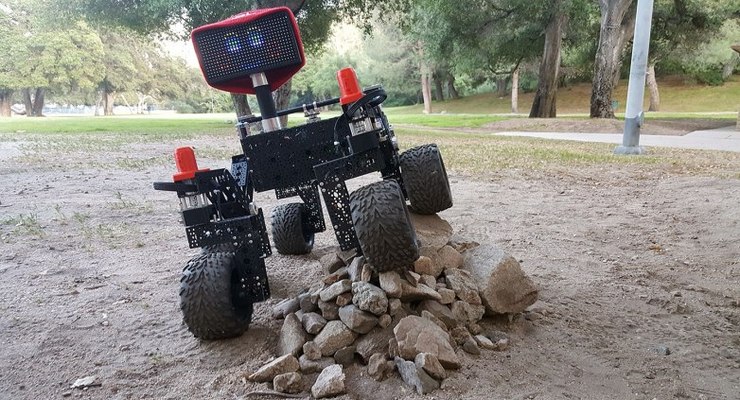
Here’s a great summer DIY project: NASA’s Jet Propulsion Laboratory just made available to the public the instructions for building a consumer version of the Mars Curiosity rover that students, hobbyists, and enthusiasts can assemble out of off-the-shelf parts for as little as $2,500.
The new version is patterned after a smaller educational model of the rover, the ROV-E, built by JPL after Curiosity’s successful landing on Mars. The ROV-E was used as JPL scientists demonstrated robotic principles and the capabilities of the Mars rover among high school and university students, and the general public as well.
JPL’s Open Source Rover Project – or OSR – generated so much interest that engineers decided to design a model that could be assembled from consumer off-the-shelf (COTS) parts so that people interested in building their own rover could do just that.
The resulting OSR is a scaled-down version of Curiosity, from its six-wheel steering all the way to its Rocker-Bogie suspension system. JPL published the design under an open source license on GitHub, where anybody can download baseline instructions and test plans for building their own OSR.
“We wanted to give back to the community and lower the barrier of entry by giving hands on experience to the next generation of scientists, engineers, and programmers,” Tom Soderstrom, project sponsor for the OSR.
“I would love to have had the opportunity to build this rover in high school, and I hope that through this project we provide that opportunity to others,” Mik Cox, JPL Data Scientist and OSR Project Manager, adds.
The published instructions for building the rover are quite detailed, but they allow the builder to make their own design choices. They can, for example, decide what controllers to use, weigh the trade-offs of adding USB cameras or solar panels, and even attach science payloads.
The OSR’s baseline design allows plenty of headroom in the power system and computation so users can choose how they want to customize and add to their rover, touching on multiple hardware and software principles along the way.
By releasing the rover design as open source, JPL gave builders a community to interact with and share design ideas. In classrooms across the U.S., students have been able to construct the rover after going through different designs, ideas, and solutions.
“It was an extremely rewarding experience getting to work with the high school teams testing the build process,” Eric Junkins, OSR designer and engineer at JPL, said. “They had a ton of great ideas and were so enthusiastic about getting involved in robotics and STEM in general. It was exactly what we were hoping to inspire with this project.”
With such an active builder/developer community, JPL says development of the OSR could take a number of directions, including using rover technology for future missions on Earth and in space, and universities and companies being able to even launch their own rover one day.
“We released this rover as a base model,” says Cox. “We hope to see the community contribute improvements and additions, and we’re really excited to see what the community will add to it.”
To access the instructions and recommendations for building the rover, visit https://github.com/nasa-jpl/open-source-rover.
















